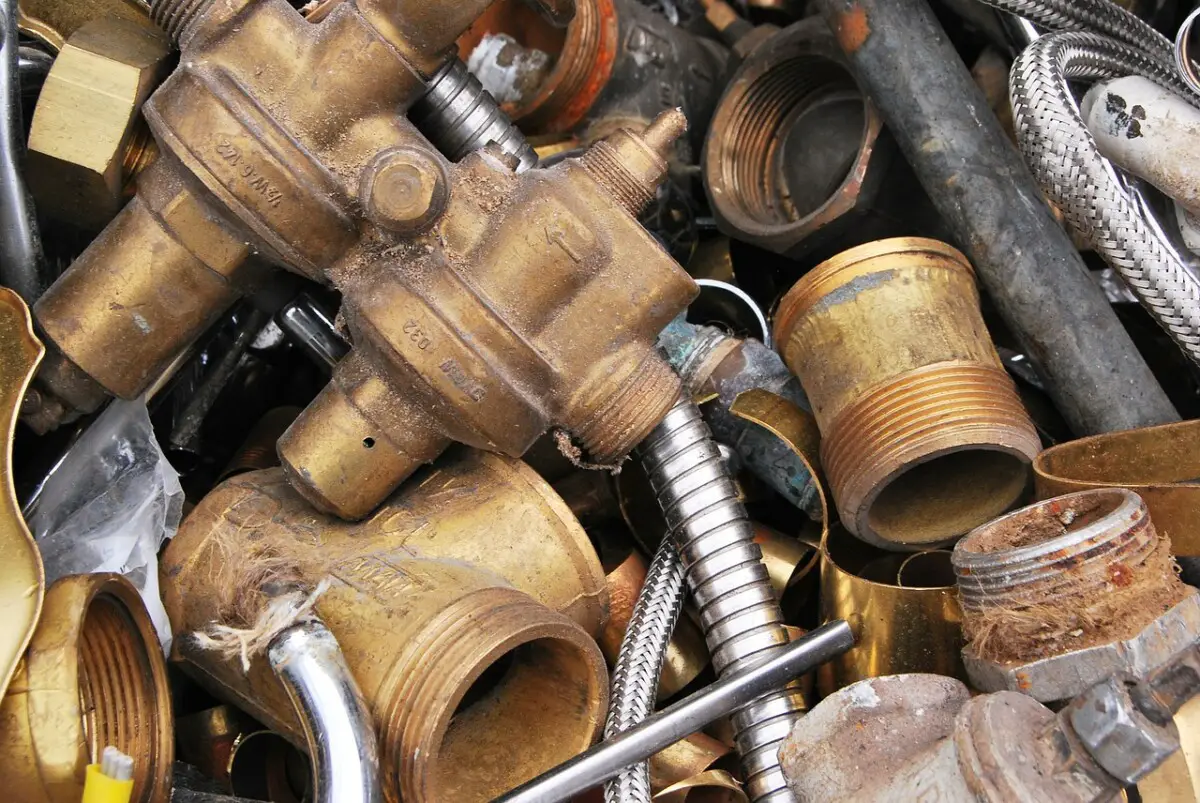In the ever-fluctuating world of commodities, scrap metal stands out as a uniquely dynamic market, offering both challenges and opportunities for those looking to delve into its depths. This guide, “The Insider’s Guide to Scrap Metal Prices: Trends, Tips, and Tricks,” aims to demystify the complexities of scrap metal pricing, providing readers with a thorough understanding of the factors that influence market values. Whether you’re a seasoned scrap collector, a business owner managing industrial waste, or a newcomer to the world of metal recycling, this article offers valuable insights into the current trends, practical tips for maximizing profits, and an overview of what the future may hold for scrap metal prices. By exploring the intricacies of this market, we equip you with the knowledge needed to make informed decisions, optimize your returns, and stay ahead in the competitive realm of scrap metal trading.
Understanding Scrap Metal Prices: An Overview
The world of scrap metal is both intricate and dynamic, with prices constantly shifting due to a variety of factors. To navigate this market effectively, it’s essential to understand what drives these changes.
1. The Global Market’s Influence: Scrap metal prices are heavily influenced by global market trends. The demand for metals in major industrial countries, particularly in manufacturing and construction sectors, plays a significant role. When countries like China, the United States, or members of the European Union ramp up infrastructure projects or manufacturing, the demand for metal increases, driving up scrap prices.
2. Type of Metal: The value of scrap metal is not uniform; it varies significantly depending on the type of metal. Precious metals like gold and silver naturally fetch higher prices, but in the realm of more common metals, copper, aluminum, and brass often lead in value. Each metal has its own market and is affected differently by global trends.
3. Purity and Quality: The condition of the metal impacts its price. Metals that are free of corrosion, insulation, and other contaminants are valued higher. For instance, stripped copper wire is worth more than insulated wire.
4. Local Market Conditions: While global trends are influential, local market conditions also play a pivotal role. Prices can vary based on local demand and supply, the number of recycling facilities in the area, and regional economic conditions.
5. Economic Policies and Trade Tariffs: Government policies, such as import taxes and trade tariffs, can significantly affect scrap metal prices. Policies that restrict the import or export of metals can reduce supply in the market, leading to higher prices.
6. Typical Scrap Metal Prices:
| Metal Type | Per Pound Pricing Guide (approximate pricing) |
| #1 Bright & Shiny Copper | $3.00 |
| #1 Copper | $2.95 |
| #1 Insulated Copper wire | $1.50 |
| #2 Copper | £2.75 |
| #2 Insulated Copper wire | $0.52 |
| 6061 Aluminum Turnings/Borings | $0.38 |
| 6061 Aluminum | $0.55 |
| 6063 Extruded Aluminum | $0.66 |
| Aluminum Cans | $0.40 |
| Aluminum Radiators | $0.38 |
| Painted Aluminum Siding/Frame | $0.52 |
| Aluminum Wheels/Rims | $0.68 |
| Aluminum/Copper Radiators | $1.40 |
| Batteries (Lead/Acid) | $0.10 |
| Casted Aluminum | $0.45 |
| Clip/MLC Aluminum | $0.52 |
| Contaminated/Irony Alum/Cu Rads | $1.10 |
| Contaminated/Irony Aluminum Radiators | $0.21 |
| Contaminated/Irony Radiators (Cu/Br) | $1.12 |
| Contaminated/Irony Red Brass | $0.54 |
| Contaminated/Irony Stainless | $0.10 |
| Contaminated/Irony Yellow Brass | $0.40 |
| Copper Transformers | $0.22 |
| Die Cast | $0.37 |
| Electric Motors | $0.18 |
| Gold Bearing Circuit Boards | $0.24-$1.45 |
| Heater Cores | $1.20 |
| Insulated Aluminum Wire/ACSR | $0.40 |
| Lead | $0.23 |
| Old Sheet Aluminum | $0.45 |
| Radiators (Copper/Brass) | $1.75 |
| Red Brass | $2.15 |
| Stainless (304) | $0.28 |
| Stainless (316) | $0.65 |
| Steel/Scrap Iron | $0.03 |
| Thermal | $0.36 |
| Yellow Brass | $1.95 |
Understanding these key factors provides a solid foundation for both sellers and buyers in the scrap metal market. By staying informed and adapting to these influences, one can make more strategic decisions and potentially increase their returns in this fluctuating market.
Current Trends in Scrap Metal Pricing
In the volatile realm of scrap metal, keeping a pulse on current trends is crucial for anyone looking to make the most of their transactions. Here, we delve into the recent fluctuations and provide insights into what the market is signaling.
1. Post-Pandemic Recovery: The COVID-19 pandemic had a significant impact on the scrap metal market, with initial downturns due to halted industrial activities. However, as economies are recovering, we are witnessing a surge in demand, especially in sectors like construction and automotive, leading to an increase in metal prices.
2. Rising Copper Prices: Copper has seen a notable increase in price, mainly due to its extensive use in electrical applications and renewable energy sectors. The global push for green energy, including solar and wind projects, has boosted demand for copper, thus elevating its scrap value.
3. Fluctuations in Steel and Iron Prices: Steel and iron, essential for construction and automotive industries, have experienced fluctuations. The prices are influenced by global supply chains and the balance between demand in China, the world’s largest steel producer, and the rest of the world.
4. Impact of Electric Vehicle Production: The rise in electric vehicle (EV) production is also shaping the scrap metal market. Metals like lithium, nickel, and cobalt, crucial for EV batteries, are gaining traction in pricing. This trend is likely to continue as the world moves towards more sustainable transportation options.
5. The Influence of International Trade Policies: Trade policies, such as tariffs and import-export restrictions, continue to play a significant role. For instance, changes in policies by major players like the USA and China can cause ripples in the global metal market, affecting prices.
Staying informed about these trends is key for anyone involved in the scrap metal market. By understanding these dynamics, sellers and buyers can better time their transactions, optimize their strategies, and anticipate future movements in the market.
Tips for Selling Scrap Metal: How to Get the Best Prices
Selling scrap metal can be a lucrative endeavor if done correctly. Understanding the market and employing the right strategies can significantly impact the profits you make. Here are some tips to help you get the best prices for your scrap metal:
1. Stay Informed About Current Prices: The prices of scrap metal can fluctuate daily. Stay updated with the current rates by checking online resources, subscribing to industry newsletters, or building relationships with local scrap yards.
2. Sort and Separate Your Metals: Different metals have different values. By sorting and separating your metals into categories like copper, aluminum, steel, etc., you can negotiate better prices. Mixed scrap usually sells for less than separated scrap.
3. Clean Your Scrap: Clean metal is more valuable than dirty or corroded metal. Remove any non-metal attachments like plastic, rubber, or wood. For example, stripping insulation from copper wire increases its value.
4. Understand the Best Time to Sell: Sometimes, waiting for the right time can increase your profits. If the market prices are low, consider storing your scrap until the prices rise, provided you have the space and means to do so safely.
5. Build Relationships with Scrap Yards: Establishing a good relationship with your local scrap yard can be beneficial. They might offer you better rates, provide valuable insights into market trends, and give you tips on preparing your scrap for sale.
By following these tips, you can maximize your earnings from selling scrap metal. It’s about being knowledgeable, organized, and strategic in your approach to dealing with scrap metal.
Navigating Challenges: Common Misconceptions and Mistakes
The scrap metal market, while lucrative, is riddled with complexities that can lead to misconceptions and costly mistakes. Understanding these common pitfalls can help you navigate the market more effectively.
1. Misjudging the Value of Scrap: One of the most common mistakes is not understanding the true value of different types of metal. For instance, some might overlook the value of less common metals like brass or underestimate the worth of clean, sorted scrap.
2. Ignoring Market Fluctuations: The scrap metal market is subject to constant fluctuations. Failing to keep up with these changes can result in selling at lower prices or missing out on peak pricing periods.
3. Inadequate Sorting and Cleaning: Proper sorting and cleaning of scrap can significantly increase its value. Many sellers lose out by mixing different types of metals or selling dirty or contaminated scrap.
4. Overlooking Local Laws and Regulations: Each region has its own laws and regulations regarding scrap metal. Not being aware of these can lead to legal issues or missed opportunities, such as certain metals being more valuable in specific areas.
5. Not Exploring Multiple Buyers: Relying on a single buyer or scrap yard can limit your earnings. Exploring different buyers can lead to better prices and more favorable terms.
By being aware of these common mistakes and misconceptions, you can improve your approach to selling scrap metal, ensuring better deals and avoiding unnecessary losses.
Future of Scrap Metal Prices: What to Expect
Predicting the future of scrap metal prices involves understanding the interplay of various global and local factors. Here’s what experts anticipate and how you can prepare for upcoming trends:
1. Increasing Demand for Renewable Resources: As the world shifts towards sustainable energy solutions, the demand for metals used in renewable energy technologies, like copper and aluminum, is expected to rise. This shift is likely to drive up scrap metal prices over time.
2. Impact of Technological Advancements: Technological advancements, particularly in recycling and processing methods, could lead to more efficient recycling, affecting supply and potentially stabilizing prices.
3. Global Economic Trends: The global economy plays a crucial role in determining scrap metal prices. Economic growth in industrial and emerging countries could lead to increased demand for metals, pushing prices higher.
4. Environmental Regulations: Stricter environmental regulations around the world may affect the supply of scrap metal, as they could lead to more efficient use and recycling of metals, impacting prices.
5. Volatility in International Trade: Trade policies and international relations can cause significant fluctuations in scrap metal prices. Changes in tariffs, import-export restrictions, or political tensions can quickly affect global metal markets.
While precise predictions are challenging, staying informed about these factors can help you anticipate changes in scrap metal prices. By understanding these trends, you can better prepare for the future, whether you’re a buyer or a seller in this market.
Conclusion
Navigating the scrap metal market requires a blend of knowledge, strategy, and adaptability. Throughout this guide, we’ve explored the various facets of scrap metal pricing, including the current trends, practical tips for sellers, common pitfalls to avoid, and what the future may hold. The key takeaway is that staying informed and adaptable is crucial in this ever-changing market.
As we’ve seen, several factors can significantly influence scrap metal prices, from global economic conditions to technological advancements and environmental regulations. By keeping a close eye on these factors, both buyers and sellers can make more informed decisions, leading to better financial outcomes.
Whether you’re a seasoned scrap metal trader or just starting, remember that knowledge is power in this industry. Continuously educating yourself, building strong relationships, and being mindful of market dynamics will equip you with the tools needed to succeed in the scrap metal market.
As the world moves towards more sustainable practices and technologies, the scrap metal industry is set to play a pivotal role. By understanding its nuances and staying ahead of trends, you can not only profit but also contribute to a more sustainable future.

